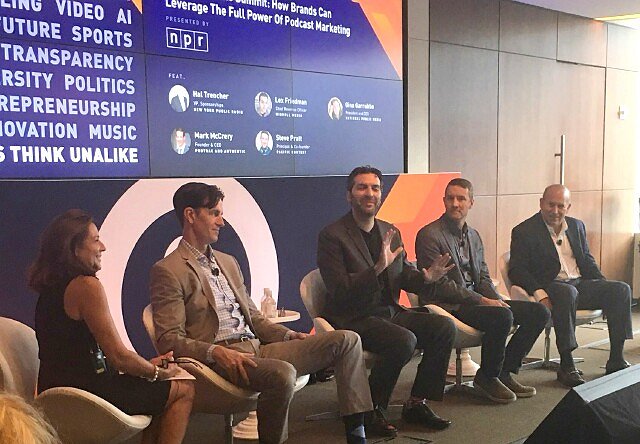Audio, like other forms of media, is fragmenting with both digital and over-the-air offerings coupled with fresh entrants such as podcasting and smart speakers. How can advertisers best leverage all of these popular formats? Sergei Peysakhov, Senior Director, Measurement and Insights, Audacy embarked on a new research study to better understand the power of audio in its many incarnations.
“Audacy is a leading national publisher with a focus on audio content,” Peysakhov explained, and has existed for over 50 years as a pioneer in FM radio. About three and a half years ago, Entercom and CBS Radio merged and a few months ago that merged company was renamed Audacy which consists of all facets of their audio business, “including our B2B media company and B2C brands.”
Total Audience Amplifies Study
Audacy’s Total Audience study was designed to offer advertisers insights into how to best meet their marketing goals by examining the synergies between the audio formats. The study examined the dynamics of digital audio and over-the-air radio when advertising messages are run on both platforms. “Do they work better together? Is there any sort of synergy to running digital and traditional radio?” he asked. These are important questions.
“A lot of times advertisers tend to fall into one of the two buckets. They have either been on the radio for many, many years and love it. But they might be a little nervous or skittish about digital audio because it feels different. Then there are marketers that are newer, born in the digital age, direct response marketers who love the digital stuff but they are worried about over-the-air. It’s funny because that distinction is really a marketing distinction. It is not a consumer distinction,” he noted. To a consumer, it is all audio and very fluid and as such, there is no reason that these two distinct formats cannot work together to drive a cogent call to action.
For marketers with these clear distinctions, it was important to understand the total audience of audio to better understand the optimal mix of audio formats from digital to over-the-air to podcasts and everything else.
Study Takeaways
Peysakhov and his team examined those time periods where digital audio advertising was running alongside over-the-air advertising and times when digital ran on its own, “and then we compared these two periods across different campaigns and we saw a very clear signal, pretty much without exception across all campaigns that the digital audio worked much harder when over-the-air was present. Digital in itself was converting at a much higher rate driving people to the website or to make a purchase,” when you are also messaging on over-the-air, he revealed.
There is considerable data available to help form insights. According to Peysakhov, the study used digital attribution that included traffic, conversion, “pixal tags that captures when the consumer makes a purchase or does some sort of low funnel transaction. We also pick up some sort of order ID … and purchase value for ROI calculation.”
The conclusions were impressive. “What we saw was the amount of traffic, the total amount of visitation to the site after exposure to an ad doubled when over-the-air was present and lower funnel conversion was about fifty percent stronger,” he revealed, demonstrating the stronger synergies to spur a call-to-action when both formats are used simultaneously.
Peysakhov added that, “one of the biggest surprises was how consistent the impact was. It was pretty much across the board where any time you had digital advertising running you add that over-the-air layer and digital works harder. It was universal across industries.”
Impact of the Pandemic
At a time when most media experienced a reset moment during the pandemic, one media form didn’t miss a beat. Audio, especially streaming digital and podcasting, continued to offer fresh content to a home-bound audience. What Peysakhov found was that, “while consumption habits of our listeners changed (during the pandemic) because of less commuting, we found that the total consumption of audio just became different. The composition became different.” He noted that, “We saw a huge spike in smart speaker audio. It was already growing and was already a large part of our listenership. It was relegated to the car for many years. But with smart speakers we’ve been saying that radio is back in the home and it just jumped.”
Interestingly, “There was actually an initial dip in podcast listening but it picked right back up. For listeners, the backlog of shows filled up and listeners found time for those shows,” doing household based activities. “I used to listen while I was commuting but now I listen to the shows while I am washing the dishes.”
Advertiser Reaction
As far as advertisers are concerned, the reaction to the study results, “has been very positive. It has led to a lot of conversations that help break down the wall. I think that a lot of advertisers mentally bucket those channels separately – a digital bucket versus over-the-air budget. Instead of thinking digital and traditional, think audio. Audio is an incredibly powerful medium,” he concluded.
This article first appeared in www.MediaVillage.com





